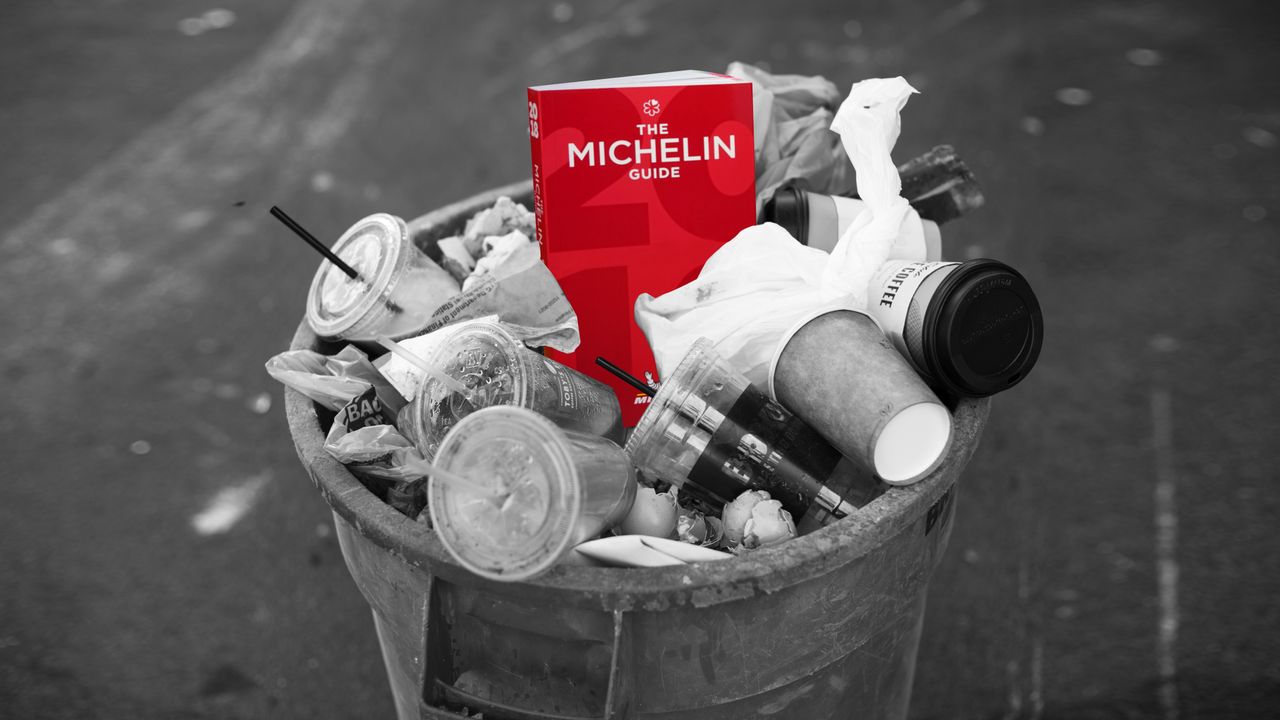Each time a new Michelin Guide appears, the dining crazies and the food media give it more attention than any other source of restaurant ratings. Case in point: the new, much anticipated one for California.
Sure, visiting a Michelin-starred eatery can be a fantastic, memorable experience. But it can also be a great disappointment, and putting your faith in a 120-year-old institution — the Michelin Guide got started in 1900 as the tyre company’s guide to French roads, hotels, gas stations and restaurants — in a cyber-charged and peer-reviewed world is to cling to the past.
In its transition from selling guidebooks to giving info away online, and having been the uncontested maker or breaker of restaurants, Michelin now has to compete with dynamic, all-encompassing sites such as TripAdvisor and Yelp; search engines; increased mainstream media coverage; Instagram; thousands of foodie blogs; and surveys such as La Liste 1,000 and the World’s 50 Best Restaurants.
EVERYONE ASSUMED THAT THE GUIDES’ TEAMS OF INSPECTORS WERE OMNIPRESENT UNTIL A RENEGADE INSPECTOR WROTE A TELL-ALL BOOK.
To compete, Michelin has entered into ventures and partnerships to try to distinguish itself in a crowded space, but this has compromised a long-held reputation for hands-off honest opinions. Michelin even profits from chefs and restaurants it appraises, and GuideMichelin.com promotes the chefs and restaurants in its guides. Michelin creates guides for state and national tourism promotion bodies and commercial sponsors such as Visit California, and on the advice of management consultants, it has been investing in travel and gastronomy internet businesses.
The recent past of Michelin Guides has no shortage of such conflicts of interest. Restaurants in France risk expulsion from the guide if they don’t subscribe to Michelin’s reservations software. (Michelin did not respond to requests for comment.) Michelin has hired chefs to design 58 Guide Michelin kitchen utensils sold in major stores in France. It offers gift certificates for meals in restaurants in France on its ViaMichelin website, an arrangement that costs the restaurants 30 percent of the value of the certificates. It stages chef dinners in Europe, North America and Asia.B Robert Brown
Michelin’s 40 percent ownership of Robert Parker Wine Advocate is a vehicle for hyping California and Asian chefs and staging wine and food events in their restaurants. In China, South Korea and Thailand, where Michelin has garnered big fees for producing guides sponsored by tourism authorities and corporations, investigative reporters have written about ratings favoritism to sponsors such as Melco Resorts’ restaurants in the Hong Kong/Macau Guide; mistake-ridden guides; rating restaurants without inspector visits; and legislators and journalists in South Korea questioning respectively the deal between the Korea Tourism Organization and Michelin along with corrupt restaurant ratings in the Seoul Guide.
It is anonymous inspector visits, actual or imagined, that make the Michelin Guides unique among all restaurant-rating media, a fact that the International Director of Michelin Guides Gwendal Poullennec mentions every chance he gets.
Fifteen years ago, everyone assumed that the guides’ teams of inspectors were omnipresent until a renegade inspector wrote a tell-all book that revealed only five inspectors were covering all of France. Michelin claims to employ 500 inspectors worldwide, the expenses and salaries of which, if they were full time, would eat up an inordinate sum of Michelin’s revenue only to create what is just another set of online ratings.
As ratings are announced annually, many inspections will have taken place several months, if not a few years, before guides appear. While most inspections are single snapshots in time, there can be more than one per year of restaurants in line to gain or lose a star or retain however many they have. The California Guide lists 657 restaurants culled from a universe of many thousands. To winnow this down, Michelin must also rely on the same evaluation sources as diners themselves.
With the paradigm shift as to how diners make their choices, recent surveys show that guides have fallen far behind relying on friends, word of mouth and interactive social media, especially Instagram.
Because restaurants are an ever-changing phenomenon — opening and closing, expanding and contracting, introducing and changing offerings — the Michelin Guides are the laggards in the restaurant information sweepstakes. The guides are well-designed and easy to use and to read, and the ViaMichelin website is now user-friendly. But Michelin, at best, is just one resource to consider along with au courant ones.
Robert Brown is an art dealer and editor of the website Michelin Scars. https://www.ozy.com/the-new-and-the-next/time-to-snub-the-snubbers-and-throw-out-your-michelin-guide/95306/













